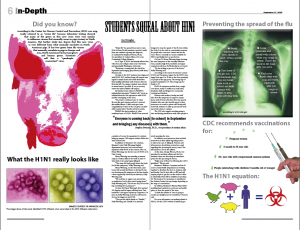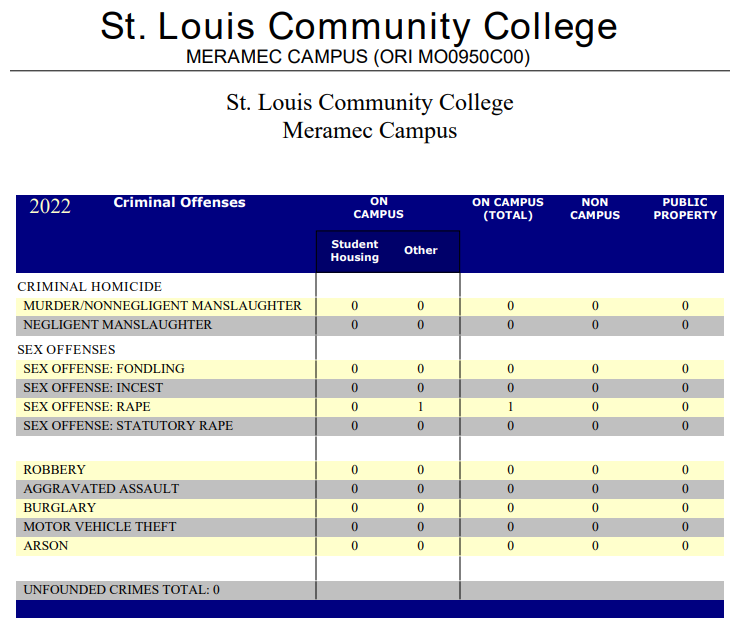students squeal about h1n1
 Joe Douglas
Joe Douglas
– Jr. Copy Editor –
“Swine flu” has spread from state to state. Now it’s here. Faculty members received e-mails from two students reporting the diagnosis, as confirmed by Stephen Petersen, Ph.D., vice president of student affairs at St. Louis Community College-Meramec.
As of Sept. 9, H1N1 had already affected two other St. Louis colleges: Saint Louis University and presumably Washington University.
“Everyone is coming back [to school] in September and bringing [any diseases] with them,” Petersen said.
On Sept. 2, five SLU students were diagnosed with H1N1. SLU students living off-campus were urged to remain home and isolate themselves from healthy individuals until 24 hours after the fever has left. On-campus students were advised to return home if possible. If not, a recovery center was made available off-campus.
AJ Sunder, forum editor for WASHU’s independent newspaper “Student Life,” wrote an editorial about his own experiences with H1N1 and the over-hyping of the virus.
“Yes, I had a confirmed case of swine flu over this past summer, and yes, I survived the terrible disease. I didn’t even get a lame congratulatory T-shirt of the sort given out after roller coaster rides,” Sunder said in his article.
WASHU has had a number of other confirmed cases of H1N1. WASHU has reserved a number of rooms for quarantine for students living on-campus. Off-campus students follow the same 24 hour rule.
In addition to Meramec’s two students, Meramec’s own Kelly Wavering, English department instructor, had a second-hand experience with H1N1 in the summer. Her son, Henry Wavering, was the first case of H1N1 in St. Clair County.
Henry Wavering was attending a summer camp in southern Illinois the week of June 15 when kids at the camp began falling ill.
“The camp did send people home that week for flu-like symptoms,” Kelly Wavering said.
Henry Wavering, on the other hand, came home with an infected blister on his leg. He was not showing any flu symptoms at the time besides a fever supposedly caused by the infection, Kelly Wavering said.
“We took him to urgent care and put him on antibiotics, but his fever wasn’t going down,” Kelly Wavering said, “The doctor said, ‘It’s not the leg; something else is going on.’”
On June 20, Henry Wavering’s fever reached 103 degrees, and he began suffering from “bad headaches” and upper respiratory congestion. On June 22, Kelly Wavering received a call from his doctor; the diagnosis was H1N1.
“They put the whole family on ‘Tamiflu,’” Kelly Wavering said. Tamiflu is an antiviral designed to stop the spread of the flu virus within the body. It is also used as a preventative measure for people who come into contact with the flu virus. There is currently no vaccine available for H1N1 specifically, but is in production.
On June 21, Henry Wavering began showing the same symptoms as the everyday Influenza virus, namely a high fever, headache and upper respiratory infection. By Wednesday he recovered.
“He was itching to get out of the house,” Kelly Wavering said.
According to the Center for Disease Control (CDC) and Prevention, targets for the H1N1 virus range from ages 5 to 29 due to the close proximity of people in this age group. The average age of people hospitalized is 19. The average age for deaths is 37.
H1N1 flu symptoms include fever, cough, sore throat, runny or stuffy nose, body aches, headache, chills and fatigue; less commonly, vomiting and diarrhea.
Petersen said students, faculty and staff who show flu symptoms are urged to remain home until 24 hours after their fever has passed. Students who miss class should report to their instructors via e-mail or phone call. Faculty will work with students to make up any missed work upon their return to campus.
The CDC also suggests avoiding going to class and limiting interactions with other people to avoid spreading the virus.
In addition, most instructors have included instructions in their syllabi regarding actions to take in the case of falling ill. Petersen said all instructors should have received an e-mail regarding this upcoming flu season, even if the information is not in the syllabus.
At this time, George Wasson, Ph.D., vice president for academic affairs, and the four academic deans are discussing the attendance policy for this upcoming flu season.
“Right now, we’ll just be following the CDC’s guidelines,” Wasson said.
Meramec’s Wellness Committee and the St. Louis County Health Department are working together to distribute flu shots to students, staff and faculty. One flu shot will cost $23 and will require people to pay for it at the cashier’s office in Clark Hall. They will be available around Sept. 30. The location for vaccination is scheduled in the Student Center, but may change depending on the stage of construction.
In addition, Meramec’s Physical Plant will be installing hand sanitizers in restrooms and public places to slow the spread of the virus.
“I think the number of cases is going to escalate not [only] here, but everywhere,” Petersen said.
For more information on anything related to H1N1, visit the CDC’s website at www.cdc.gov.











